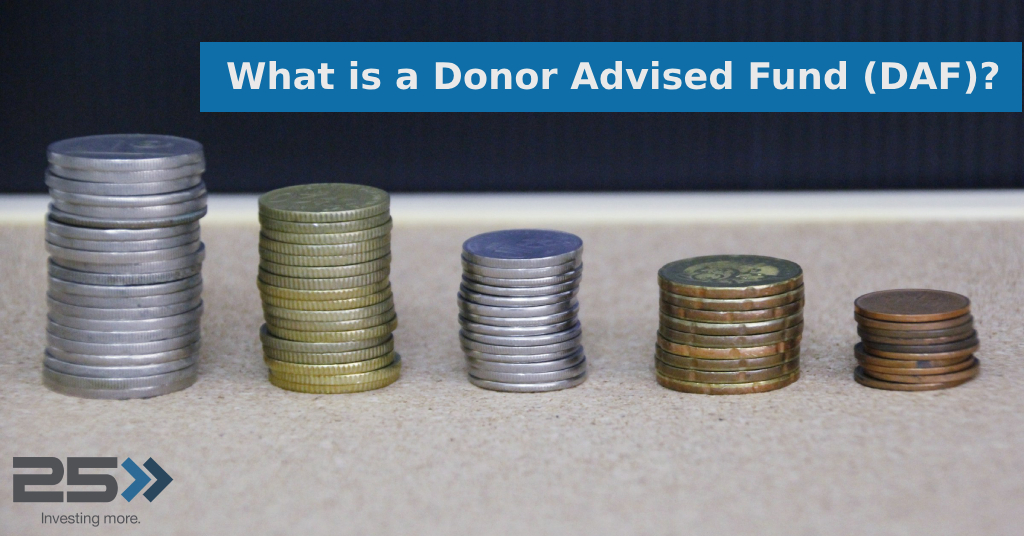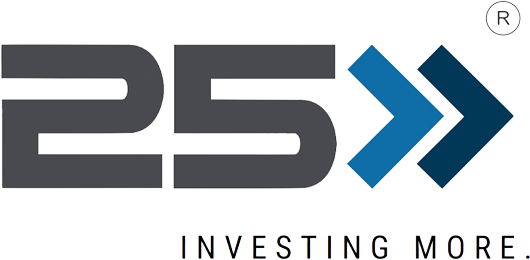What is a Donor Advised Fund?

Written by: Randy Larson, J.D., LL.M., CFP®
I just re-watched the historical mini-series, “The Men Who Built America.” It documents the ingenious men who built bridges spanning the Mississippi, mass produced combustion engine cars, created electricity, and more. These men were fiercely competitive and obscenely rich.
And happy, right? No.
Henry Ford said, “I was happier when doing a mechanic’s job.”
John D. Rockefeller said, “I have made many millions, but they have brought me no happiness.”
Andrew Carnegie agreed that “millionaires seldom smile.”
John Jacob Astor claimed, “I am the most miserable man on Earth.”
The secret to happiness? It may just be charitable giving.
Avoid the pitfalls of the past and look toward the future with generosity. One of the most popular charitable giving vehicles is the donor-advised fund, or DAF. Wondering what a donor-advised fund is and whether it makes sense for you and your organization? Keep reading to learn more.
Why Give?
For thousands of years, literature has cautioned against chasing after riches. King Solomon, the wisest king in recorded history, cautions, “such is the fate of all who are greedy for money; it robs them of life.” He further notes that “whoever loves money never has enough; whoever loves wealth is never satisfied with their income.”
He therefore advises listeners to “give freely and become more wealthy,” stating that “the generous will prosper” and “those who refresh others will themselves be refreshed.” At first glance, this advice seems strange. Solomon suggests that if we want to exit the rat race, “be refreshed,” and even become “more wealthy,” we are to be generous and give freely.
But really, on closer inspection, this advice isn’t strange at all. Generously giving unlocks the heart to become a joyful giver. In today’s modern world, one way to become a joyful giver is utilizing a donor-advised fund, or DAF.
How the Donor Advised Fund Works
There are a plethora of ways to give. The typical way is to donate cash via credit card or check directly to a charity. With this giving strategy, at the end of the year, the charity sends a tax receipt that you show your accountant for a tax deduction (in the year of the gift). While this method has its benefits, many for-profit and nonprofit organizations alike could benefit from establishing a donor-advised fund, or DAF, to manage their charitable giving.
A donor-advised fund (DAF) is a giving account established at a public charity. The 501(c)(3) public charity serves as a “sponsoring organization,” which manages and administers individual DAF accounts. A DAF may sound like it’s for the ultra-rich, but really it is accessible to anyone who is able to itemize their deductions on their taxes and wants to donate to charitable organizations.
Here’s how it works.
To qualify for a tax benefit, you must itemize your deductions. For 2024, the standard deduction is $14,600 for individuals and $21,900 for married couples filing jointly. In other words, you’ll need to exceed those numbers to be eligible. If you do not exceed those numbers, there is essentially no tax benefit given.
Using a DAF, you can pool all your charitable contributions (cash, stock, business interests, etc.) in one account. At your recommendation, you can direct this account to which IRS-qualified charities to donate. This move additionally allows for control over the timing of your income tax deduction. In simple terms, you are setting up a brokerage account. You fund the brokerage account with charitable gifts (cash/cryptocurrency/real estate/life insurance/other complex assets) and receive a tax benefit in that year.
Of course, a DAF is not just a charitable giving strategy, but also a tax mitigation and investment strategy. If you choose to invest the funds, you can see tax-free growth. For example, if you bought some Nvidia or Bitcoin ten years ago, you may have some large gains that you don’t want to pay taxes on (i.e., capital gains tax). Move them over to your DAF and you get a tax deduction on the entire amount, not just what you initially invested.
Why Use a Donor-Advised Fund?
A donor-advised fund is a great way to not just make charitable donations to your favorite charities and reach your philanthropic goals, but also get some good tax benefits. It’s a win-win for everyone involved when you set up this type of charitable fund.
If you are charitably inclined, or you are trying to save on taxes at the end of a big year, the task of finding a charity or tracking down receipts once you’ve found and funded one can be a challenge. A DAF allows you to fund in a tax year and get the immediate tax deduction on the full amount in that tax year without having to make big decisions on where to gift in that same year. It essentially allows you to kick the can down the road, if you so choose, and provides some additional flexibility. You also don’t have to keep track of receipts, because everything will be tracked within your portal.
FAQs
What organizations offer donor-advised fund accounts?
It’s possible to set up a donor-advised fund or charitable giving account with sponsoring organizations like Fidelity Charitable, Schwab Charitable, National Philanthropic Trust, and American Endowment Foundation. Many religious and/or community foundations like Catholic Charities USA also sponsor these accounts.
What if I want to donate to an organization that is not yet IRS-approved?
If an organization is not yet approved, you can submit simple documentation to get it approved. Donor-advised fund contributions hit a new high of $86 billion in 2022 because of the flexibility, simplification, and tax benefits that they provide. 10% of all giving now comes directly from donor-advised funds and donor-advised fund giving has increased over 400% over the last decade.
Are there any fees associated with a donor-advised fund?
Usually, yes, there are annual administrative fees that providers charge to manage a charitable giving account like a donor-advised fund. For example, Fidelity Charitable typically charges less than 1% of the account’s balance and Schwab Charitable charges around 0.60%, although these numbers can change based on factors like the amount of funds in each account.
Can I remove assets from a donor-advised fund?
Generally, no, you cannot remove assets from a donor-advised fund.
Do donor-advised funds allow for grantmaking?
Yes, you can usually make grant recommendations to organizations like universities and tax-exempt public charities; charitable distributions are usually not allowed to private foundations.
I want to explore a DAF. What are my next steps?
If you think a DAF or other investment options may be worth exploring, contact your 25 Financial Advisor today.
References:
https://www.nerdwallet.com/article/taxes/donor-advised-funds
https://www.nptrust.org/reports/daf-report/
https://www.schwabcharitable.org/features/fees-and-minimums
https://www.schwabcharitable.org/features/fees-and-minimums
Disclaimer: We are not tax professionals, so please consult with your own tax professional before implementing any strategy discussed.
Content is intended for informational purposes only and should not be considered as financial advice. Please consult with a professional financial advisor and perform your own analysis before making any investment decisions.


